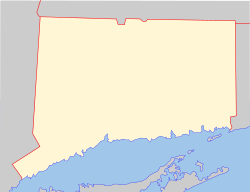Thurman v. City of Torrington facts for kids
Thurman v. City of Torrington was an important court case from 1985. It involved Tracey Thurman, a woman from Connecticut. She sued the police department in Torrington, Connecticut. Tracey claimed the police did not give her equal protection under the law. This was because they failed to protect her from her abusive husband, Charles "Buck" Thurman, Sr.
Contents
The Thurman Case: What Happened?
In 1982, Tracey Thurman left her husband, Charles "Buck" Thurman. Their marriage had been short but violent. She took their son, Charles Jr., with her. For eight months, they lived apart. During this time, Buck often bothered Tracey. He also threatened to kill her.
Early Incidents and Police Inaction
In November 1982, Buck forced his way into the home where Tracey was staying. He took Charles Jr. The child was later returned to Tracey. However, the police would not take a complaint about Buck breaking into the house.
A few days later, Buck stopped Tracey's car on a public street. He threatened her. A police officer was nearby but did not step in. The officer only acted after Buck broke Tracey's car windshield with his fist. Buck was found guilty of disturbing the peace. He received a suspended sentence. He was told to stay away from Tracey. But within weeks, Buck started threatening Tracey again. Tracey told the police, but they did not try to arrest Buck.
Between January and May 1983, Buck made many threats to Tracey. These threats broke the court order. Tracey reported them to the police. Still, no action was taken. In May 1983, Tracey went to the Torrington Police Station five times. She asked them to arrest her husband for his threats. The police gave her different reasons for not acting. For example, they said "the officer who has your case is on vacation."
On May 6, 1983, Tracey asked for a restraining order against Buck. A restraining order is a court order that tells someone to stay away from another person. The court granted her request.
The Final Attack and Arrest
On June 10, 1983, Buck came to the house where Tracey was staying. He demanded to see her. Tracey stayed inside and called the police. Fifteen minutes passed, and no officer arrived. Tracey then went outside to talk to Buck. It was 25 minutes after her call when one officer finally arrived. The officer stayed in his car while Buck chased Tracey. Buck grabbed her hair and hurt her.
The officer eventually got out of his car. He took a knife from Buck but did not arrest him. While the officer watched, Buck kicked Tracey many times. Buck then ran into the house. He grabbed Charles Jr. and brought him outside. Buck dropped Charles Jr. onto Tracey's injured body.
About 40 minutes after the police arrived, Tracey was put into an ambulance. Buck threatened Tracey one more time. Finally, he was arrested.
Buck was found guilty of assault. He was sentenced to 20 years in prison. He served less than eight years. Tracey Thurman spent eight months in the hospital. She was partly and permanently paralyzed.
The Lawsuit Against the City
Attorney Burton M. Weinstein and Judith A. Mauzaka took Tracey's case. Mr. Weinstein was known for his work on police misconduct. In 1984, Tracey Thurman became the first woman in America to sue a city and its police department. She claimed they violated her civil rights. She argued the police ignored the violence because she was married to the attacker.
The case was allowed to go forward by Senior Judge M. Joseph Blumenfeld. The city tried to have the case dismissed. They argued that Tracey's claim was not based on a constitutional violation. But the court disagreed. The court found that the police had a "pattern of affording inadequate protection, or no protection at all, to women who have complained of being abused by their husbands." This was like a rule that treated women differently. This made a valid claim for damages. The case was allowed to continue.
Tracey Thurman was first awarded $2.3 million. She later agreed to a settlement of $1.9 million. This happened when the city agreed not to appeal the decision.
Lasting Impact of the Case
The Thurman lawsuit led to big changes in domestic violence laws across the country. One major change was the "Thurman Law." This law is also known as the Family Violence Prevention and Response Act. It was started in Connecticut in 1986. This law makes it mandatory for police to arrest people in domestic violence cases. This is true even if the victim does not want to press charges.
The large amount of money the City of Torrington had to pay was widely reported. This news appeared in newspapers and academic papers. Police departments felt pressure from this financial consequence. They were forced to change how they handled domestic violence situations.
Tracey Thurman's story was later made into a TV movie in 1989. It was called A Cry for Help: The Tracey Thurman Story. Nancy McKeon played Tracey. Dale Midkiff played Buck. Bruce Weitz played Tracey's lawyer, Burton Weinstein. Philip Baker Hall played Judge Blumenfeld.
Similar Cases
- Scott v. Hart
- Bruno v. Codd


